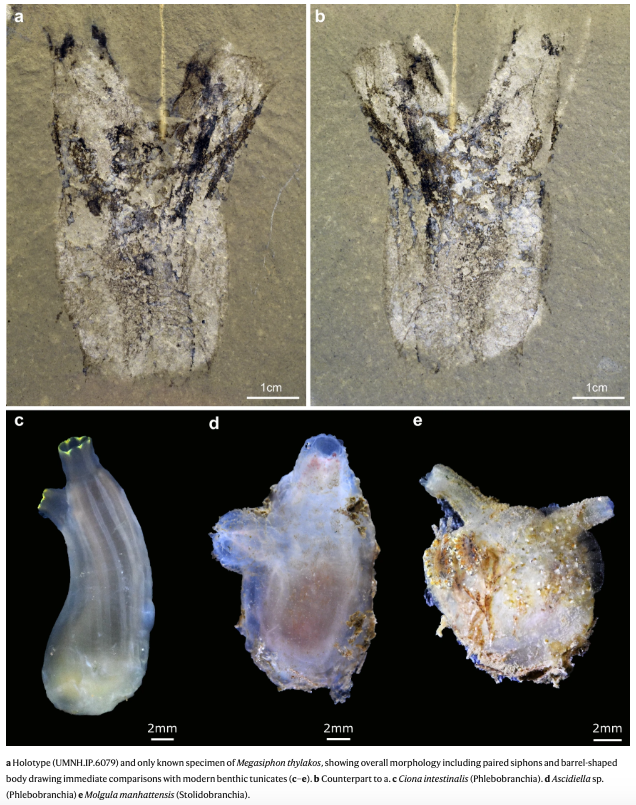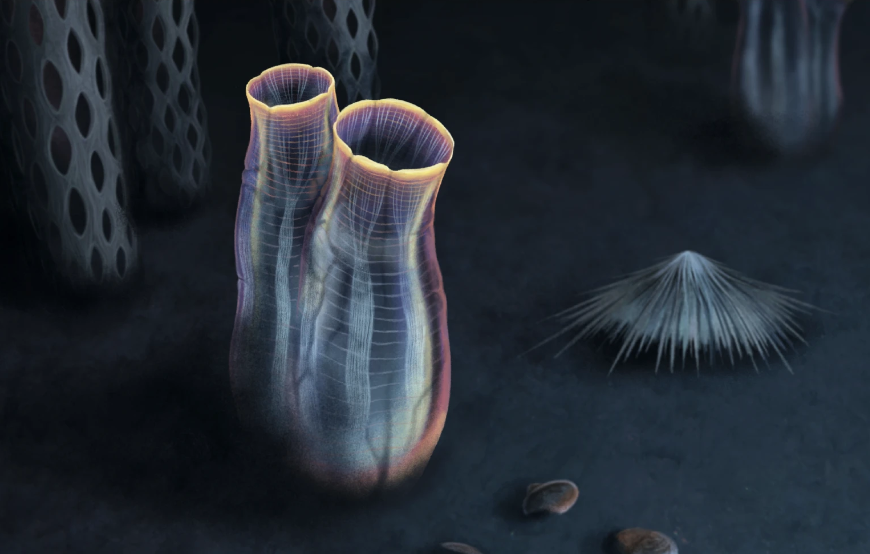Paleontologists have discovered the fossil of a 500 million-year-old tunicate in the Marjum Formation of Utah. Named Megasiphon thylakos after its two large, prominent siphons and sack-like body, the discovery is important because tunicates have a poor fossil record (due to their soft tissues,) and are a sister group to Vertebrata, making them key to unraveling our own origins in deep time.
There are over 3000 species of tunicates with Ascidiaceans having a two-part life cycle, including a free-swimming, tadpolelike larva that settles and metamorphoses into a stationary adult. And appendicularians, which are pelagic, solitary animals again superficially resembling tadpoles that filter pico to nanoplankton using an excreted cellulose-rich “house.” Tunicate larvae have a notochord, the precursor to a spinal column—a defining trait of the group called chordates, which includes all vertebrates.

One of the most elusive questions in chordate evolution is whether the last common ancestor of Tunicata was a tadpole-like free-living animal (as in appendicularians), or a sessile animal with paired siphons that lived attached to the benthos (as in ascidiaceans) with little or no fossils to prove that, up until now.
Based on the morphology of M. thylakos and molecular phylogenies of extant representatives, the earliest non-appendicularian tunicates were most likely epibenthic and solitary ascidiacean-like organisms with a biphasic life cycle that included larval metamorphosis. The origin of vertebrates was thought to go back 450 million years, but the discovery and subsequent description of the 3.2cm long Ascidiacean pushes that timeline backward by another 50 million years.
Citation
Nanglu, K., Lerosey-Aubril, R., Weaver, J.C. et al. A mid-Cambrian tunicate and the deep origin of the ascidiacean body plan. Nat Commun 14, 3832 (2023). https://doi.org/10.1038/s41467-023-39012-4



